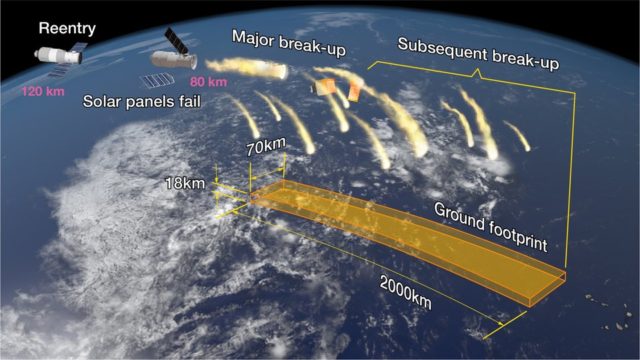
The first space station China launched into orbit is no more.
The space station Tiangong-1, which translates to “Heavenly Palace” in English, came crashing back into Earth’s atmosphere at approximately 8:16 p.m ET over the southern Pacific ocean, according to numerous sources, including the Joint Force Space Component Command, a statement from China reported by the AFP, and the Aerospace Corp.
According to reports, the space station reportedly burned up in the atmosphere over the Pacific northwest of Tahiti, not far from the “spacecraft graveyard” where space agencies often try to land debris from spacecraft.
It’s likely that debris is scattered over a long stretch of the Pacific in that region.
Tiangong-1’s end has been coming for years now.
The station was first launched at the end of September in 2011 and had been visited twice by crews of taikonauts, or Chinese astronauts, in 2012 and 2013.
But in March of 2016, China lost contact with Tiangong-1. The space station’s orbit has been slowly decaying since then. By May 2017, Tiangong-1 was coasting about 218 miles above Earth and dropping by about 525 feet a day.
It was then just a countdown to figure out when and where it would break up in Earth’s atmosphere.












